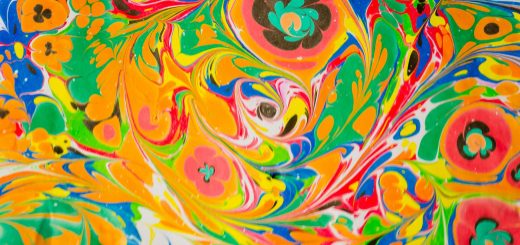What’s the Difference Between Ghosts and Spirits?

Before diving in, please note: This post is for informational purposes only. If you’d like to know more about how we approach topics, feel free to check out our friendly Disclaimer Page.
Hey there, amazing readers! 🖐️ Just a quick note: yes, we know there are a lot of ads here. Trust us, we get it—it’s not the prettiest look, but they help us keep this blog alive and kicking. Those pesky little ads cover the costs of all the behind-the-scenes magic, from hosting and tech stuff to creating content we hope you’ll love.
We’re committed to delivering quality posts, and your support (even just sticking around despite the ads) means everything to us. So, bear with us, and thanks for helping us keep the good vibes rolling. Now, on to the fun stuff! 😉
TRANSLATE BUTTON AT THE END OF THE ARTICLE
A Quick Overview
The debate between ghosts and spirits has captured the imaginations of countless people throughout history.
From eerie whispers in haunted houses to the comforting presence of a guiding force, these phenomena evoke strong feelings and curiosity.
But what’s the difference between ghosts and spirits?
Are they just two words for the same thing, or do they represent distinct entities in our understanding of the supernatural?
Let’s dive into this fascinating topic, exploring cultural myths, misconceptions, and personal experiences along the way.
Understanding the Basics: Ghosts vs. Spirits Explained
At the most basic level, ghosts and spirits can seem quite similar.
Both involve elements of the afterlife, but their meanings differ significantly.
A ghost generally refers to the spirit of a deceased person that has not moved on from the physical world.
Ghosts often linger due to unfinished business, emotional attachment, or traumatic experiences before their death.
They might show up in familiar places, typically those where they had strong connections.
On the other hand, spirits can represent a broader category of non-physical entities.
They may include the souls of deceased individuals but also encompass other forms of energy or consciousness, such as guardian spirits, nature spirits, or even angels.
While ghosts are often tied to specific locations and events, spirits can exist anywhere, often serving a guiding or protective role.
To summarize, ghosts are typically seen as the remnants of individuals who have passed away, while spirits can include a wide array of non-physical beings that may or may not have human origins.
Think of it as a Venn diagram where ghosts fit within the larger circle of spirits, but not all spirits are ghosts.
The Historical Context: Ghosts in Cultural Myths
Throughout history, ghosts have played a significant role in various cultures.
Ancient civilizations like the Egyptians believed in an afterlife where the dead had to navigate through a dangerous underworld.
They believed the deceased needed the right burial practices to avoid becoming restless spirits.
Similarly, in ancient Greece, the concept of ghosts was prevalent, often depicted as shades wandering the earth until they were properly honored through rituals.
In Asia, ghost stories abound, with many cultures attributing supernatural powers to the spirits of ancestors.
For example, in Chinese beliefs, the Hungry Ghost Festival is a time when families honor their ancestors, ensuring they have food and support in the afterlife.
These rituals highlight the importance of remembering and respecting those who have passed on.
Ghosts have also made their mark in literature and folklore.
From Shakespeare’s haunted characters to modern horror films, the idea of spirits returning to settle scores or share unfinished tales has become a staple in storytelling.
This cultural history not only reflects societal fears but also a deep-rooted fascination with the mysteries of life and death.
Spirits in Folklore: Guardians or Guides?
Spirits often take on many roles in folklore and mythology.
Some cultures view spirits as guardians or guides, providing wisdom and protection.
For instance, Native American tribes often speak of animal spirits that offer guidance and support in their lives.
These spirits are believed to embody traits that can help individuals navigate challenges.
In many African traditions, ancestral spirits are revered as protectors of the family.
They watch over the living and provide guidance, often through dreams or visions.
This connection to the past reinforces the belief that death is not an end but a continuation of existence in another form.
Conversely, some spirits are viewed as tricksters.
In various cultures, these mischievous entities can create chaos or play pranks.
The coyote spirit in Native American lore, for example, is known for its cleverness and ability to outsmart others.
In summary, spirits can embody both nurturing and chaotic energies, depending on the cultural context.
Whether seen as protectors or playful tricksters, they highlight the diverse interpretations of non-physical beings across different societies.
Common Misconceptions: Are All Spirits Ghosts?
One common misconception is that all spirits are ghosts.
While they share similarities, not all spirits have a human origin.
For example, nature spirits, such as fairies or elementals, are believed to exist in harmony with the natural world, independent of human influence.
They often represent the forces of nature and are not connected to deceased individuals.
Another misconception is that ghosts and spirits are inherently negative or malevolent.
Many people associate the paranormal with fear, but not all encounters are frightening.
Many individuals report feeling comforted by the presence of a deceased loved one or a protective spirit watching over them.
Furthermore, the idea that all ghosts are trapped or restless is also misleading.
Some may choose to remain close to their loved ones, while others may have fulfilled their purpose and moved on.
Understanding these distinctions can help dispel fear and foster a more nuanced view of the supernatural.
Ultimately, recognizing the differences between spirits and ghosts enriches our understanding of the myriad ways people interpret the afterlife.
Ghosts Unveiled: Their Characteristics and Behaviors
Ghosts exhibit various characteristics and behaviors that distinguish them from other entities.
One key feature is their emotional energy.
Ghosts are often linked to specific places, events, or people, leading to manifestations of their presence.
This attachment might result from strong emotions experienced during their lifetime, such as love, grief, anger, or regret.
In terms of behavior, ghosts can be quite varied.
Some may merely linger, creating a sense of unease in their environment.
Others might actively engage with the living, causing physical disturbances, such as moving objects or creating noise.
There are also reports of ghosts communicating through electronic devices, like spirit boxes or EVP (Electronic Voice Phenomena).
Physical appearances of ghosts can vary too.
Some witnesses describe them as translucent figures, while others see them as fully formed apparitions.
Their appearance often depends on the observer’s perception and the emotional energy surrounding the ghost.
Additionally, the time of day can influence ghostly activity.
Many encounters occur at night when the world grows quiet, heightening the sense of mystery.
Yet, some ghosts can be active during the day, challenging the notion that the night is the only time for supernatural encounters.
In essence, ghosts are complex entities shaped by their past experiences and emotional ties to the physical world.
Their behaviors and appearances reflect their unique stories.
The Spirit World: What Do Spirits Represent?
Spirits embody various meanings and representations that can shift depending on cultural beliefs.
Many see spirits as connections to the afterlife, bridging the gap between the physical and spiritual realms.
They often serve as reminders of the continuity of life, emphasizing that death is not the end but a transformation.
In various cultures, spirits represent guidance and wisdom.
People often seek out the counsel of their ancestral spirits or guardian angels during difficult times.
This connection offers comfort, support, and direction, reinforcing the idea that we are never truly alone.
Moreover, spirits can symbolize aspects of nature.
In indigenous cultures, spirits of animals, plants, and elements are celebrated for their unique qualities and teachings.
These connections foster respect for the environment and encourage a harmonious relationship with the natural world.
In many spiritual practices, connecting with spirits can lead to self-discovery and personal growth.
They can provide insights into one’s path, helping individuals navigate challenges and make meaningful choices.
Ultimately, spirits represent a rich tapestry of meanings, influencing how we view life, death, and our place in the universe.
Their presence invites introspection and encourages us to embrace the mysteries of existence.
Emotional Energy: Why Ghosts Are Often Tied to Places
Emotional energy plays a crucial role in why ghosts are often tied to specific locations.
Places where significant events have occurred—be it a tragic death, a joyful celebration, or a moment of intense emotion—can create a strong attachment for the deceased individual.
This bond allows their energy to linger long after they’ve departed.
Some famous haunted locations, like battlefields, hospitals, or historic homes, are often associated with intense emotional experiences.
The energy from these events can leave an imprint, creating a fertile ground for ghostly encounters.
Visitors frequently report feelings of sadness, unease, or even joy when in these places, suggesting a connection to the emotional history embedded in those environments.
Furthermore, personal attachments to places can also influence ghostly activity.
For instance, many people report seeing the ghosts of loved ones in their childhood homes or other significant locations.
This underscores how powerful emotional ties can be, allowing spirits to resonate in places that held meaning during their lifetimes.
Interestingly, some researchers argue that the energy left behind can manifest as residual hauntings.
These are experiences where a ghost appears to replay past events without any awareness of the present.
It’s as if the emotional energy is so strong that it creates a loop, allowing the living to witness moments frozen in time.
In short, emotional energy deeply connects ghosts to specific places, making certain locations hotspots for supernatural experiences.
Whether it’s love, loss, or longing, these emotions shape the ghostly presence we encounter.
Communication Channels: How We Connect With Spirits
Connecting with spirits can happen in various ways, and the methods vary widely among different cultures and belief systems.
One of the most common forms of communication is through dreams.
Many people report receiving messages from loved ones who have passed on while dreaming, providing comfort or closure.
Additionally, some individuals claim to possess intuitive abilities, allowing them to sense or see spirits.
These gifted individuals often serve as mediums, facilitating communication between the living and the deceased.
They interpret messages from spirits, providing insights and helping heal emotional wounds.
Technology has also played a role in contemporary communication with spirits.
Devices like spirit boxes, EVP recorders, and ghost hunting apps aim to capture messages from the other side.
While skeptics question their validity, many enthusiasts share experiences of capturing unusual sounds or voices during their investigations.
Another channel for connecting with spirits is through rituals or ceremonies.
Many cultures have practices designed to honor or communicate with ancestors.
These can include lighting candles, offering food, or inviting spirits to join during gatherings, creating a welcoming space for their presence.
Artistic expression serves as a means of connecting with spirits too.
Many artists and writers find inspiration from the spiritual realm, channeling emotions and messages through their work.
This connection often leads to profound insights and creative expressions.
In summary, the avenues for connecting with spirits are as diverse as the cultures that practice them.
Whether through dreams, technology, or artistic endeavors, the desire to communicate with the unseen reflects our enduring curiosity about the mysteries of existence.
Different Beliefs: Cultural Views on Ghosts and Spirits
Cultural views on ghosts and spirits are incredibly diverse, shaped by history, traditions, and beliefs.
In Western cultures, ghosts are often portrayed as malevolent or vengeful entities.
Films and literature frequently depict ghost stories filled with suspense and horror, reinforcing these ideas.
However, many people also view them as tragic figures, longing for closure or peace.
In contrast, many Eastern cultures embrace a more harmonious view of spirits.
In Hinduism, for example, the concept of spirits is intertwined with reincarnation.
The belief that souls cycle through different lives influences how people perceive death, viewing it as a transformative experience rather than an ending.
Similarly, in Buddhism, the idea of interconnectedness encourages a different relationship with spirits, emphasizing compassion and understanding.
In African traditions, ancestral spirit worship is common.
Many communities honor their ancestors, seeking guidance and blessings.
Celebrations such as the Day of the Dead in Mexico highlight the importance of honoring deceased loved ones, emphasizing joy and remembrance rather than fear.
Indigenous cultures around the world often have unique perspectives on spirits.
Many view them as integral parts of the natural world, embodying the spirits of animals, plants, and landscapes.
This connection fosters a deep respect for nature and reinforces the belief that everything is interconnected.
Ultimately, understanding these diverse perspectives enriches our insights into how ghosts and spirits fit into humanity’s collective consciousness.
Each culture’s beliefs reflect unique values and experiences, demonstrating the rich tapestry of human spirituality.
The Science Behind the Supernatural: Any Evidence?
The supernatural often walks a fine line between belief and skepticism.
Scientists have approached the phenomenon of ghosts and spirits with varying degrees of interest.
While some researchers explore the psychological aspects—such as how grief can manifest as perceived ghostly encounters—others investigate the physical evidence of the paranormal.
One area of study involves the environmental factors associated with ghost sightings.
Changes in electromagnetic fields, temperature fluctuations, and even infrasound (sound waves below the human hearing range) have been linked to feelings of unease or experiences often attributed to ghosts.
Some researchers argue that these factors can trigger emotional responses that lead to perceived encounters.
While empirical evidence remains elusive, many enthusiasts argue that personal experiences hold significant value.
Countless individuals have reported encounters with ghosts and spirits, and their stories often resonate deeply, influencing beliefs and perceptions.
Technological advancements have also led to the development of devices aimed at capturing evidence of the supernatural.
Ghost hunting teams use various tools—such as thermal cameras, EMF meters, and EVP recorders—to document their experiences.
While skeptics question the reliability of these methods, believers often find comfort in the data they collect.
It’s essential to approach the topic of ghosts and spirits with an open mind.
While the scientific community may not fully embrace the supernatural, personal experiences and cultural beliefs continue to shape our understanding of these phenomena.
Whether seen as figments of imagination or genuine experiences, the exploration of the unknown remains a captivating aspect of human existence.
Personal Experiences: Tales of Ghosts and Spirits
Personal stories about encounters with ghosts and spirits often evoke strong emotions and spark curiosity.
I’ve heard countless tales from friends and family that blur the lines between the ordinary and the extraordinary.
One such story was shared by my grandmother, who fondly spoke of her late mother visiting her in dreams.
She described the experience as comforting, feeling reassured by her mother’s presence guiding her through life’s challenges.
Another friend recounted a chilling encounter in an old house he rented.
He felt an unexplainable coldness in one room, and strange noises echoed at night.
After some research, he discovered the house had a tragic past, with a family having suffered a loss there.
While he didn’t feel threatened, he often wondered if the lingering energy was tied to the haunting memories of those who once lived there.
These personal stories often highlight the emotional connections that ghosts and spirits foster.
Whether comforting or unsettling, they remind us of the deep bonds we share with those who have passed on.
Many people find solace in the belief that their loved ones continue to watch over them, creating a sense of comfort amid grief.
As we share our experiences, we connect with one another, fostering a sense of community and understanding.
It’s fascinating how these stories transcend cultural boundaries, showing a universal desire to comprehend the unknown and find meaning in our experiences.
Embracing the Unknown: Celebrating the Supernatural!
Ultimately, the journey into the world of ghosts and spirits invites us to embrace the unknown.
Whether we view these entities with skepticism or belief, they provoke thought and inspire curiosity.
By exploring different perspectives and sharing personal stories, we create a dialogue that celebrates the mysteries of existence.
Engaging with the supernatural can also encourage introspection.
It prompts us to reflect on our relationships with the past, the present, and what lies beyond.
Many find comfort in the idea that life continues in some form after death, fostering a sense of connection with those we’ve lost.
Additionally, celebrating the supernatural can lead to a greater appreciation for the cultural richness surrounding these beliefs.
Whether it’s through art, literature, or personal encounters, the stories we tell keep the memories alive, preserving the legacies of those who came before us.
In conclusion, the differences between ghosts and spirits enrich our understanding of the supernatural.
They share a fascinating space in our collective consciousness, offering insights into our emotions, connections, and beliefs.
Whether you’re a skeptic or a believer, there’s something undeniably captivating about exploring the realms of the unseen.
So, let’s continue to share our stories and celebrate the mysteries that bind us all together.
Conclusion
In the end, the distinction between ghosts and spirits is a nuanced topic filled with cultural richness and personal experiences.
While ghosts are often viewed as the lingering remnants of the deceased, spirits encompass a broader spectrum of non-physical entities.
Emotional energy, cultural beliefs, and personal encounters all shape our understanding of these phenomena.
By embracing the unknown, we cultivate curiosity and empathy, encouraging open dialogue about life, death, and everything in between.
So, whether you find yourself in a haunted house or feel the comforting presence of a guiding spirit, remember that we are all part of the same mysterious tapestry of existence.

The Enlightenment Journey is a remarkable collection of writings authored by a distinguished group of experts in the fields of spirituality, new age, and esoteric knowledge.
This anthology features a diverse assembly of well-experienced authors who bring their profound insights and credible perspectives to the forefront.
Each contributor possesses a wealth of knowledge and wisdom, making them authorities in their respective domains.
Together, they offer readers a transformative journey into the realms of spiritual growth, self-discovery, and esoteric enlightenment.
The Enlightenment Journey is a testament to the collective expertise of these luminaries, providing readers with a rich tapestry of ideas and information to illuminate their spiritual path.
Our Diverse Expertise 🌟
While our primary focus is on spirituality and esotericism, we are equally passionate about exploring a wide range of other topics and niches 🌍📚. Our experienced team is dedicated to delivering high-quality, informative content across various subjects ✨.
To ensure we provide the most accurate and valuable insights, we collaborate with trusted experts in their respective domains 🧑🏫👩🏫. This allows us to offer well-rounded perspectives and knowledge to our readers.
Our blog originally focused on spirituality and metaphysics, but we’ve since expanded to cover a wide range of niches. Don’t worry—we continue to publish a lot of articles on spirituality! Frequently visit our blog to explore our diverse content and stay tuned for more insightful reads.





